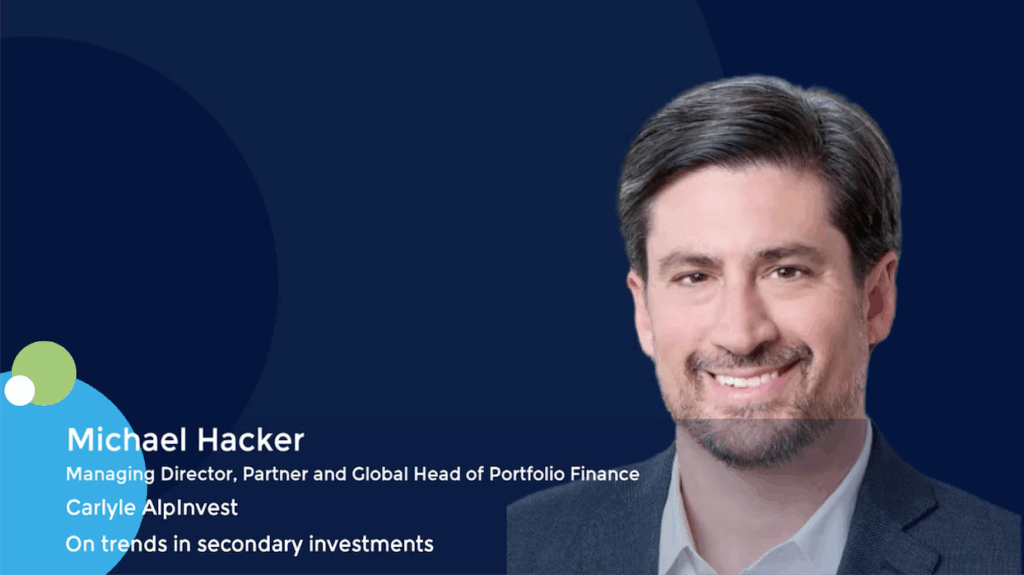CV-squared deals pile up as uncertain markets push GPs into longer holds
More sponsors are looking to launch continuation vehicles (CVs) for assets they moved into CVs years earlier as traditional exits remain challenging.
Multiple bankers and advisors claim to be seeing, or working on, an increasing number of so-called CV-squared transactions. The uptick comes as CVs from the first wave of formation between 2019 and 2021 near the end of their lives – typically a five-year span with the option of two one-year extensions.
“Many of these were priced at the top of the market, so getting the desired outcomes via regular exits can be challenging, especially in a market challenged by tariff uncertainty. This means another CV can make sense,” said one secondaries advisor.
The rise of CVs helped global GP-led secondaries volume climb from USD 28bn in 2019 to USD 30bn in 2020 and USD 63bn in 2021, according to Lazard. LP-led activity usually accounts for the bulk of overall secondaries volume, but in 2020 and 2021, the GP-led side achieved parity.
These CVs are nearing maturity at a time of renewed market uncertainty. Thanks to a swell of optimism following November’s US presidential election, sponsor-led exits reached a four-year high of nearly USD 113bn in 1Q25, according to Mergermarket data.
However, sentiment has since weakened in response to the US tariffs agenda, reigniting concerns about the exit environment. The likes of Blackstone and EQT have already warned of muted distributions this year.
With storm clouds overhead, some sponsors managing CVs are in a bind. They have already sold investors on the merits of holding assets for longer in pursuit of additional upside. Now, they are under pressure to generate liquidity, but pushing through a sale in the near term may involve compromising on valuation and sacrificing returns.
A CV-squared might deliver the best of both worlds. “We have seen a pickup in LPs wanting to get liquidity so they can free it up and make commitments to new vehicles,” said Jeffrey Diehl, head of investments at Adams Street Partners. “And then GPs have taken it into their own hands to drive liquidity options for LPs through these CVs.”
Others see the trend as simply a natural evolution of the GP-led secondaries market. Once primarily regarded as a solution for stranded portfolio companies, from 2019 these transactions morphed into single-asset CVs for so-called trophy assets.
“These [CV-squared] situations involve outperforming assets where a sponsor would like to get liquidity for its CV investors, and other secondary investors would like to own the assets,” a second secondaries advisor said.
Overall, appetite for GP-led secondaries shows no signs of abating. Last year, secondary transaction volume globally rose to USD 152bn, a 39% increase from 2023. Lazard expects it to hit USD 172bn in 2025, with GP-led accounting for USD 72bn. In addition, GP-led volume may surpass LP-led deals this year as new and returning sponsors tap the market.
“LPs who have had exposure to a portfolio company for a long time may have similar levels of conviction in that portfolio company’s future potential as the GP. They may not want to cash out or be cashed out of their investment, even if other LPs in the same investment fund would welcome a liquidity opportunity,” said Lou Sorgi, a partner in Proskauer’s Private Funds Group.
“The CV squared transactions are an eloquent way to allow people who do want to stick around to keep their exposure in these assets, while at the same time providing those LPs pushing for more frequent exit and distribution ratios an elective solution.”
Selling the story
Making the case for a CV involves countering any lingering concerns among LPs that the sponsor is incentivized to push for it over a conventional exit. While attitudes have improved as the market has matured, market participants expect transparency levels and potential conflicts of interest to be closely scrutinized in CV-squared deals.
“It’s generally good to have stable ownership, but I think LPs also have very, very clearly decided they want their money back sooner, and [CV-squared] gives that kind of option,” said one secondaries investor. “I think the question that’s really going to come out of this is how many of these things are actually trophy assets or not.”
Answering that question is challenging for LPs that have limited internal resources, especially if they are already inundated with more CV pitches than they can easily process. Many also lack the capacity to properly value the underlying assets.
These dynamics can impair decision-making over a first-time CV, prompting many LPs to feel compelled to exit rather than roll over their interests. Such investors are likely to be even more wary of a CV-squared, and consequently more inclined to exit, said Fadi Samman, a partner at Akin.
“Their fund structure and return profile on the transaction do not necessarily lend itself to a roll option in a CV squared transaction and typically secondaries investors represent a majority of the capital in a continuation fund.” explained Samman.
“Therefore, they may be more skeptical of a secondary exit on a secondary vehicle, and so I think GPs will be faced with a more scrutinizing eye on such transactions.”
At the same time, the proliferation of CVs in recent years means an increasing amount of data is available. Able to draw on comparative examples across the industry – or even within their own portfolios – certain LPs will assertively challenge GPs, multiple sources observed. How a CV-squared can deliver improved distributions to paid-in (DPI) is a natural focal point.
“Transparency has always been important to LPs, but in today’s environment, LPs simply can’t afford to be passive and to not understand deals,” said one capital formation executive.
LPs and secondary investors alike will expect more optionality from GPs before they commit to rolling over into a new vehicle. To that end, GPs will be expected to articulate a clear case for why a second CV would be necessary after the first, especially in lieu of other options that could be available for creating liquidity.
“GPs are now having less they can hide behind. They can spin their narrative for the first time, but not twice,” the secondaries investor said. “I think secondary buyers are feeling this way too. At the end of the day, I don’t want to be a buyer of a company that they don’t want to own.”
The indefinite hold
Even though CV-squared transactions are still in their infancy, industry participants expect a ramp up in deal activity in the near term. Sub-optimal exit conditions are the principal driver, with sponsors seeing extended holding periods as the most logical option.
“Ultimately, whether to hold on to an outperforming asset or to effectuate an exit for existing investors, the motivation behind a CV-squared is not too different from that of a first-generation CV,” said YC Shao, a principal at New York-based Headland Capital.
“We believe this will further compound the growth of the CV market, making it an increasingly important exit option for GPs.”
What is perhaps most emblematic of this sentiment is the slow emergence of CV-cubed deals, which multiple sources claim are starting to be considered. The assets in question tend to be steady cash generators – perhaps with a risk profile more akin to infrastructure than private equity – that sponsors want to keep in their portfolios.
Issues that are top of mind for LPs and secondaries investors as they assess CV-squared opportunities will resurface for CV-cubed. Indeed, they might be more accentuated. However, the concept of CV-cubed is in keeping with broader visions of a world in which traditional private equity investment holding periods no longer apply.
“ If you have a compounding asset that’s been held for a decade and it’s just a cash machine, I don’t think necessarily that a public exit is the right option for that company,” a second secondaries investor said.
Global sponsors have been experimenting with permanent capital structures for several years. There has been talk of large-scale core funds that could hold assets indefinitely yet allow investors to trade in and out through liquidity mechanisms.
The notion that secondaries could play a significant role in this evolution is testament to the market’s expansion. As funds have become larger, so too have the deal sizes they are willing to back. According to Lazard, 14% of lead investors had an average cheque size of USD 200m or more in 2024, up from 7% in 2023. Club deals are also increasingly prevalent.
There is a capacity to support CVs across multiple iterations even as the underlying assets continue to scale. At the same time, the strategic buyer universe for private equity portfolio companies shrinks the later they become. If the IPO route is also unappealing, GPs may take advantage of opportunities to roll and roll.
“Now we’re in a world where your private capital solution is as, and in some cases even more, compelling than going into the IPO market, so these transactions and structures aren’t going away and will be something that just continues to iterate on itself,” said Sorgi from Proskauer.
It also comes down to valuation. Sales to strategic investors are generally the preferred option for sponsors exiting assets held in CVs because these tend to command premium pricing. If no one is willing to pay what assets are thought to be worth, holding on for another round becomes more compelling, noted an M&A banker currently working on a CV-squared deal.
Secondaries surge
Ever larger funds explain the increase in dedicated capital for secondaries to USD 288bn from USD 255bn in 2023, according to Jefferies. The 10 largest funds account for about 50% of dry powder, but the number of groups with funds larger than USD 1bn has grown to about 30.
Incumbents, across the spectrum, have more capital to deploy. With the buyer universe expanding as well, there is a sense that the longstanding supply-demand imbalance holding back GP-led secondaries is gradually being addressed.
“There have been record fundraises among the largest and most active investors in secondaries, who have continued to amass larger and larger war chests,” said Quinn Kolberg, a managing director responsible for GP-led secondaries at William Blair.
Earlier this year, Intermediate Capital Group closed its largest secondaries fund aimed at GP-led deals, securing USD 11bn for investments in North America and Western Europe. More recently, Pantheon and Rothschild’s Five Arrows Managers have announced new flagship secondaries funds that are twice as large as those in the previous vintage.
Evergreen funds, also known as 40 Act Funds, geared towards retail investors are growing in size and number, and expanding their coverage from LP-led deals to the GP-led space. GPs, including large sponsors like Warburg Pincus, are bulking up in-house secondaries teams, and LPs such as sovereign wealth funds are doing the same.
“These traditional LPs are able to do some of these deals on their own. They’re forming teams on their own if they have the capital and resources to do so,” said a third secondaries investor.
More competition for deals means better pricing, which may further incentivize GPs to explore CV-squared transactions. In 2024, 91% of single-asset CVs achieved pricing of at least 90% of net asset value (NAV), according to William Blair. This compares to 73% in 2023. In the multi-asset CV space, 73% of deals reached this threshold, up from 41%.
“We think it is certainly healthy for the market and transacting at fair value is what we are always trying to accomplish,” said Kolberg. “It definitely gives confidence to a GP who may be considering a range of different exit options for a business to forge ahead with a continuation fund.”










